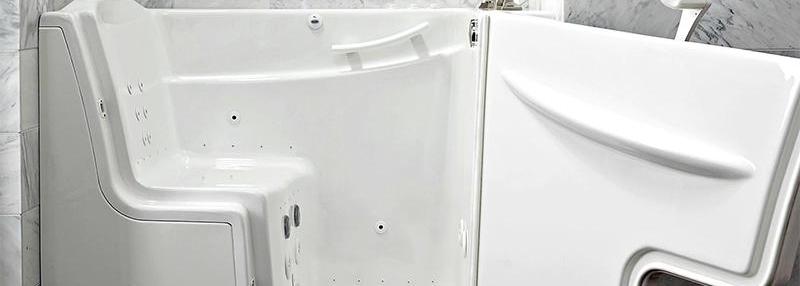Headaches can be debilitating, but you don’t have to resort to medication every time one strikes. Cold and heat therapy are natural, accessible, and effective ways to relieve headache pain. These therapies can target the root causes of headaches, such as muscle tension, inflammation, and nerve sensitivity, providing much-needed relief. Let’s explore how you can use cold and heat therapy to alleviate headache symptoms and get back to feeling your best.
Advertisement
Cold Therapy for Headache Relief
Cold therapy, also known as cryotherapy, involves applying a cold compress to specific areas of the body to reduce inflammation and numb pain. This therapy works well for headaches, particularly migraines, by constricting blood vessels, which reduces blood flow to the brain and alleviates the pain. It is also effective in reducing swelling and inflammation in the muscles around the head and neck, which can help ease tension headaches.
To use cold therapy for headache relief, start by wrapping a cold pack or ice pack in a thin towel to avoid direct contact with the skin. Apply the compress to your forehead, temples, or the back of your neck, depending on where you feel the most pain. Hold the cold compress in place for about 15-20 minutes at a time, taking breaks in between to avoid skin damage.
Cold therapy can help reduce the intensity of a headache, particularly during its early stages. Many migraine sufferers find that using cold compresses provides immediate relief and helps shorten the duration of a headache. It’s an easy and affordable method that requires no special equipment other than some ice or a cold pack.

Heat Therapy for Headache Relief
Heat therapy, in contrast to cold therapy, involves the application of warmth to relax muscles and promote increased blood flow. Heat is particularly beneficial for tension headaches, which often result from tight muscles in the neck, shoulders, and scalp. Applying heat to these areas helps to soothe muscle spasms, improve circulation, and reduce the pain associated with tension headaches.
To use heat therapy for headache relief, you can apply a warm compress or heating pad to the neck, shoulders, or upper back. If you don’t have a heating pad, you can fill a sock with rice and microwave it for 1-2 minutes to create a makeshift heat pack. Alternatively, a warm shower or bath can also help relax your muscles and relieve tension.
Heat therapy is best used for headaches that stem from muscle tension, stress, or tightness. If you have a sinus headache, a warm compress placed over the sinuses (around the eyes, nose, and forehead) can also help relieve the pain by loosening mucus and improving circulation. Using heat during a headache can provide soothing comfort and alleviate discomfort in a natural, non-invasive way.
Advertisement
Alternating Cold and Heat Therapy
One of the most effective strategies for headache relief is to alternate between cold and heat therapy. The combination of both treatments can have a synergistic effect, providing faster and longer-lasting relief. The cold therapy works to numb the pain and reduce inflammation, while the heat therapy helps to relax tight muscles and improve blood circulation.
To alternate between cold and heat therapy, you can start by applying a cold compress for 15-20 minutes, followed by a warm compress for 15-20 minutes. You can repeat this cycle several times a day, depending on how severe the headache is. Be mindful to listen to your body—if one therapy feels more effective than the other, feel free to adjust the routine.
Alternating between cold and heat can be particularly helpful for headaches that are caused by multiple factors, such as tension and inflammation. By addressing both the muscle tightness and the blood flow issues, this combination therapy can provide comprehensive headache relief.
When to Use Cold vs. Heat Therapy
While cold and heat therapy can both be helpful for headaches, they work best in different situations. Cold therapy is most effective for migraines, cluster headaches, and headaches caused by inflammation. If you experience sharp, throbbing pain or sensitivity to light and sound, cold therapy can help reduce the intensity of the pain and make you feel more comfortable.
On the other hand, heat therapy is better suited for tension headaches or headaches caused by tight muscles or stress. If you feel tightness or stiffness in your neck, shoulders, or upper back, heat can help relax the muscles and reduce the pain. Heat therapy can also be beneficial for sinus headaches, as the warmth can help clear out congestion and promote sinus drainage.
To get the best results, it’s important to assess the type of headache you’re experiencing and choose the appropriate therapy. If you’re unsure, you can try both cold and heat to see which one provides more effective relief.

Tips for Using Cold and Heat Therapy Safely
While cold and heat therapy are generally safe and effective, it’s important to use them with caution to avoid injury. Here are a few tips to ensure that you use cold and heat therapy safely:
- Avoid prolonged exposure: Whether using cold or heat, don’t apply a compress for more than 20 minutes at a time. Prolonged exposure can lead to skin damage or discomfort.
- Protect your skin: Always use a barrier, such as a towel or cloth, between the cold or heat source and your skin to prevent burns or frostbite.
- Monitor the temperature: Make sure that the cold or heat therapy isn’t too extreme. The pack should feel cool or warm, but not unbearably hot or cold.
- Take breaks: Allow your skin to rest between therapy sessions, especially when alternating cold and heat, to avoid irritation.
By following these safety guidelines, you can effectively use cold and heat therapy to reduce headache symptoms without causing any harm.
Advertisement
Final Thoughts
Cold and heat therapy are simple, affordable, and effective ways to relieve headache pain naturally. Whether you’re dealing with a migraine, tension headache, or sinus-related discomfort, these therapies can provide significant relief. Cold therapy can help reduce inflammation and numb pain, while heat therapy relaxes tight muscles and improves circulation. Alternating between the two therapies offers a balanced approach to addressing both the physical and neurological causes of headaches. By incorporating these methods into your routine, you can manage your headaches more effectively and avoid relying solely on medication.
References
- “Migraines and Cold Therapy: Benefits and Techniques,” American Migraine Foundation, accessed January 9, 2025, https://americanmigrainefoundation.org/.
- H. E. Meyer, The Benefits of Heat and Cold Therapy for Headaches (Chicago: Health Press, 2020), 45-47.
- “Cold and Heat Therapy: How It Works for Headaches,” Cleveland Clinic, accessed January 9, 2025, https://www.clevelandclinic.org/.
- Sarah Jones, “How to Use Heat and Cold Therapy for Pain Relief,” WebMD, accessed January 9, 2025, https://www.webmd.com/.


